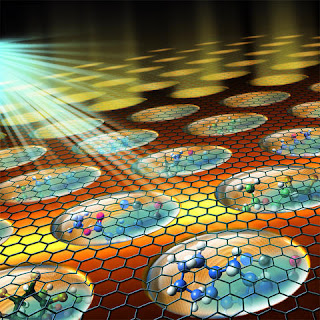Topics: Graphene, Electrical Engineering, Materials Science, Nanotechnology, Semiconductor Technology
By capping liquids with graphene, an ultrathin sheet of pure carbon, researchers at the National Institute of Standards and Technology (NIST) and their colleagues have revitalized and extended a powerful technique to image surfaces. The graphene lids enable researchers for the first time to easily and inexpensively image and analyze liquid interfaces and the surface of nanometer-scale objects immersed in liquids. The new capability has the potential to advance the development of batteries, highly charged capacitors for power-grid technology, and new catalysts such as those used in the chemical industry.
In the imaging technique, known as photoemission electron microscopy (PEEM), ultraviolet light or X-rays bombard a sample, stimulating the material to release electrons from a region at or just beneath its surface. Electric fields act as lenses, focusing the emitted electrons to create an image.
NIST: Graphene Lid Revitalizes Imaging Technique, Ben Stein

Comments